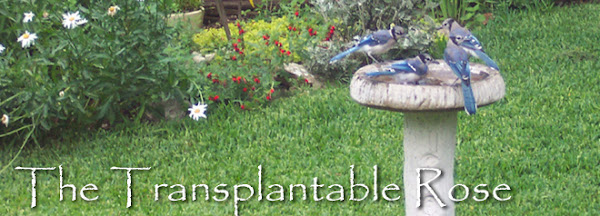This
post "The Insistence of Violets" was written by Annie in Austin for
her Transplantable Rose blog.
According
to my plant spreadsheet, I was at the annual Zilker Garden Fest on March 27, 2010, and
spent a few dollars on one young plant of Sweet violet/ Viola odorata 'Royal
Robe' from Emerald Garden Nursery's booth. Violets grew wild in the grass in Illinois
but I had never seen any in Austin and I missed them. The little plant was tucked into the
center of the back yaupon bed but if that violet ever bloomed, I missed the
show and didn't take a photo or add it to a bloom list. On the spreadsheet, the
plant name had been moved to the Dead section with a brief note: No sign,
spring 2012.
Last fall I planted a few snowflake bulbs, shaking cayenne pepper over the ground in hopes it would keep squirrels from digging them up. Oh, what’s this? There was is a little clump of what looked like violet leaves. I set a rock next to it as a mower guard and checked it once in awhile.
Last fall I planted a few snowflake bulbs, shaking cayenne pepper over the ground in hopes it would keep squirrels from digging them up. Oh, what’s this? There was is a little clump of what looked like violet leaves. I set a rock next to it as a mower guard and checked it once in awhile.
This week
I was surprised to see an open flower and a few buds, looking very much like
the photos of 'Royal Robe' online. So what happened? Even if I saw no flower
petals, many violas can make seeds from closed, self-pollinated cleistogamous
flowers that grow near the ground.
Perhaps
the original plant made seeds that refused to germinate during five long years
of drought and heat, but when the rains came and the reservoir lake refilled
last year, this violet was persuaded to give Austin another chance.









